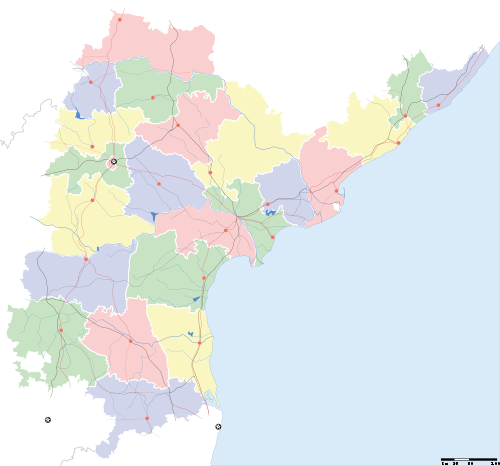Groundwater
Is irrigation water free? A reality check in the Indo-Gangetic Basin – A working paper by the Challenge Program on Water and Food
Posted on 17 Aug, 2010 09:41 PMThe paper generated under the Challenge Program for Water and Food (CPWF) project explores in some depth a totally different dynamic in the irrigation economy of the vast Indo-Gangetic basin (IGB), an important exception to the global characterization. The global debate on ‘‘water as an economic good’’ presumes that irrigation water supply is delivered, controlled, and priced by public institutions. In the developing world, the price of water is kept so low that water use cost leaves farmers no incentive to use it efficiently.
Indo-Gangetic river basins: Summary situation analysis by Challenge Program on Water and Food
Posted on 16 Aug, 2010 07:37 PMThe paper by the Challenge Programme on Water and Food (CPWF) - Basin Focal Project provides a brief situation analysis related to water, agriculture & poverty, water resources, water productivity, institutional aspects and opportunities & risks related to the development of the Indo-Gangetic basin (IGB). Management of IGB water resources presents some formidable challenges and, therefore, steps must be taken towards integrated management of the IGB’s water and land resources in order to ensure the future sustainability of all production and ecosystems in the basin.
Groundwater regulation under consideration for Andhra Pradesh
Posted on 16 Aug, 2010 05:01 PMThe legislation is likely to be in the form of an upgrade to the AP Water Land and Trees Act (WALTA).

Click here for the current Act
Attached are two working documents that are being used to frame the discussion for the new regulations.
PLEASE NOTE: These in no way represent final or official positions of the AP Government or other organisations and are not to be taken as such.
Emerging groundwater crisis in urban areas – A case study of Bangalore city
Posted on 16 Aug, 2010 07:14 AMThe paper by the Institute for Social and Economic Change documents the case of Ward No. 39 situated at the outskirts of the Bangalore city to understand the emerging groundwater crisis due to overdraft in urban areas. Bangalore has no perennial river, which resulted in the growth of many lakes, acting as a source of groundwater recharge earlier.
Increasing groundwater dependency and declining urban water quality – A comparative analysis of four South Indian cities
Posted on 15 Aug, 2010 07:18 AMThis paper by the Institute of Social and Economic Change (ISEC) examines the extent of groundwater dependency and quality status in four South Indian cities viz., Hubli, Dharwad, Belgaum and Kolar cities. Widespread water shortage problems have resulted in increased dependency on groundwater with tapping the resources to unsustainable levels. In Karnataka, out of 208 urban local bodies that come under Karnataka Urban Water Supply and Drainage Board, 41 depend on groundwater.
Modeling of a coastal aquifer in Goa using FEFLOW – A research report by National Institute of Hydrology
Posted on 14 Aug, 2010 11:49 AMThe study by National Institute of Hydrology attempts to model seawater intrusion using FEFLOW, an interactive finite element simulation system in the coastal area of Bardez taluka in North Goa and evaluate the impact of increasing groundwater development on the phenomenon. Coastal tracts of Goa are rapidly being transformed into settlement areas and the poor water supply facilities have encouraged people to develop their own sources of water by digging or boring wells.
Simulation of soil moisture movement in Barchi watershed in hard rock region of Karnataka using SWIM model – A research report by National Institute of Hydrology
Posted on 14 Aug, 2010 06:08 AMThis study by the National Institute of Hydrology deals with simulation of soil moisture movement and determination of groundwater recharge from rainfall in Barchi watershed in the hard rock region of Karnataka using the numerical model, Soil Water Infiltration and Movement (SWIM).
Research reports of the National Institute of Hydrology (1996-2001) - Highlights
Posted on 12 Aug, 2010 10:29 PM
The India Water Portal is pleased to announce to its users, that a comprehensive archive of over two hundred and fifty technical research reports of the National Institute of Hydrology (NIH), Roorkee, have now been made available on the portal, and in the public domain for the first time.
Water Initiatives Orissa dated on 5th August 2010
Posted on 11 Aug, 2010 12:18 PMWIO Urges the Government of Orissa to come out with a While Paper on state and availability status of water resources in the state. The demand comes in the wake of the government's consistent claim that the state is water surplus even though water scarcity hits us all every day.
Sambalpur, 5th August 2010 - As the industrial overdrive of Orissa continues with signing of MoU after MoU with water guzzling industries, there is no clarity on the exact water available in the state. The government has been propagating that Orissa is a water surplus state. However, statistics used by the various reports of the government are dated to 2001, from when the real industrialization boom has taken off in the state. It is time that the government comes out with a transparent position paper on the exact water availability in the state or else water conflicts will aggravate.
Ingress of saline water in coastal aquifers of Junagadh – A report by CAREWATER
Posted on 08 Aug, 2010 12:02 AM Salinity in coastal groundwater is a widespread problem and may be caused by individual or combined effects of inherent salinity, tidal effect, irrigation by saltwater and by seawater intrusion due to extensive pumping.
Salinity in coastal groundwater is a widespread problem and may be caused by individual or combined effects of inherent salinity, tidal effect, irrigation by saltwater and by seawater intrusion due to extensive pumping.




